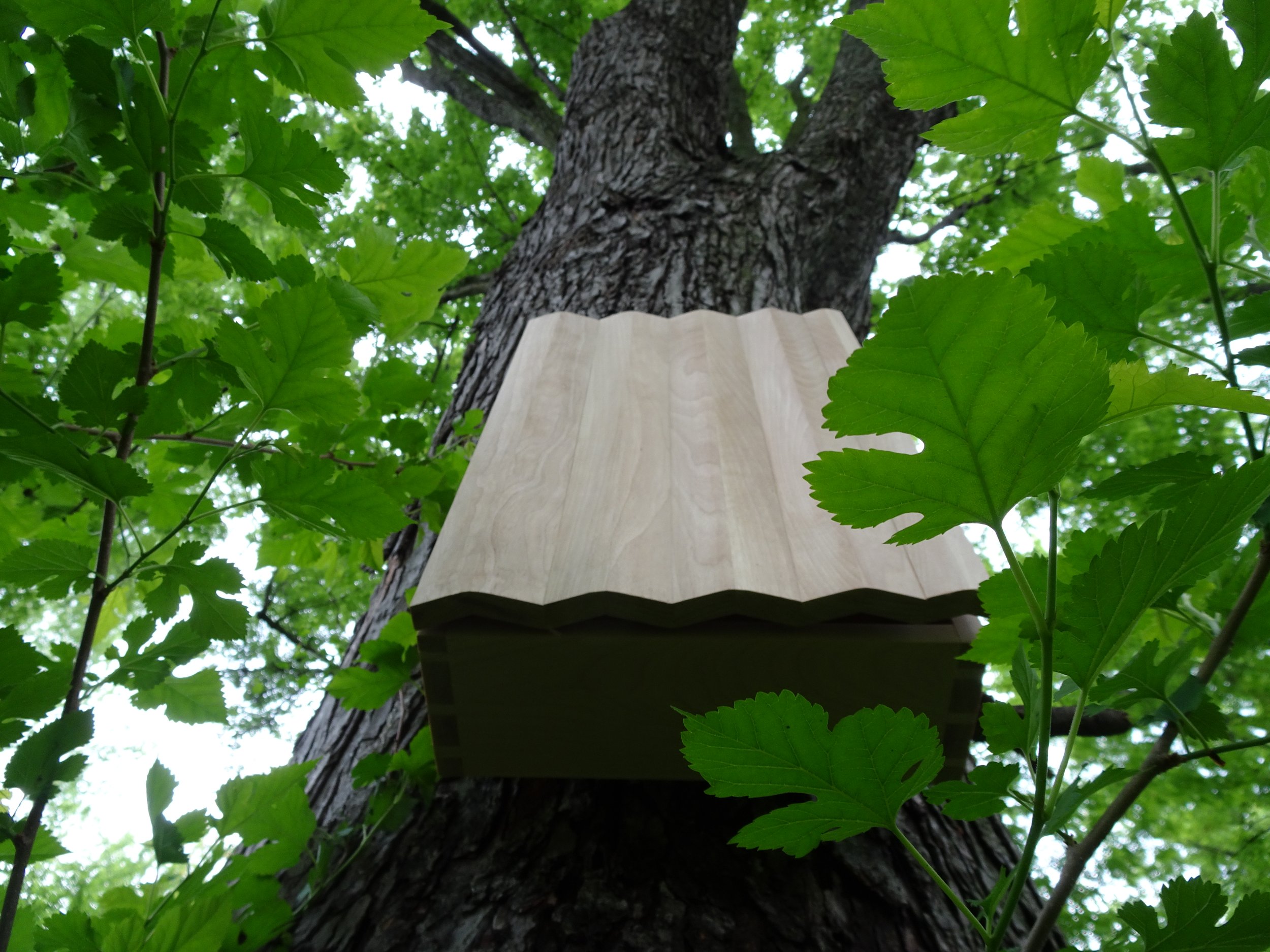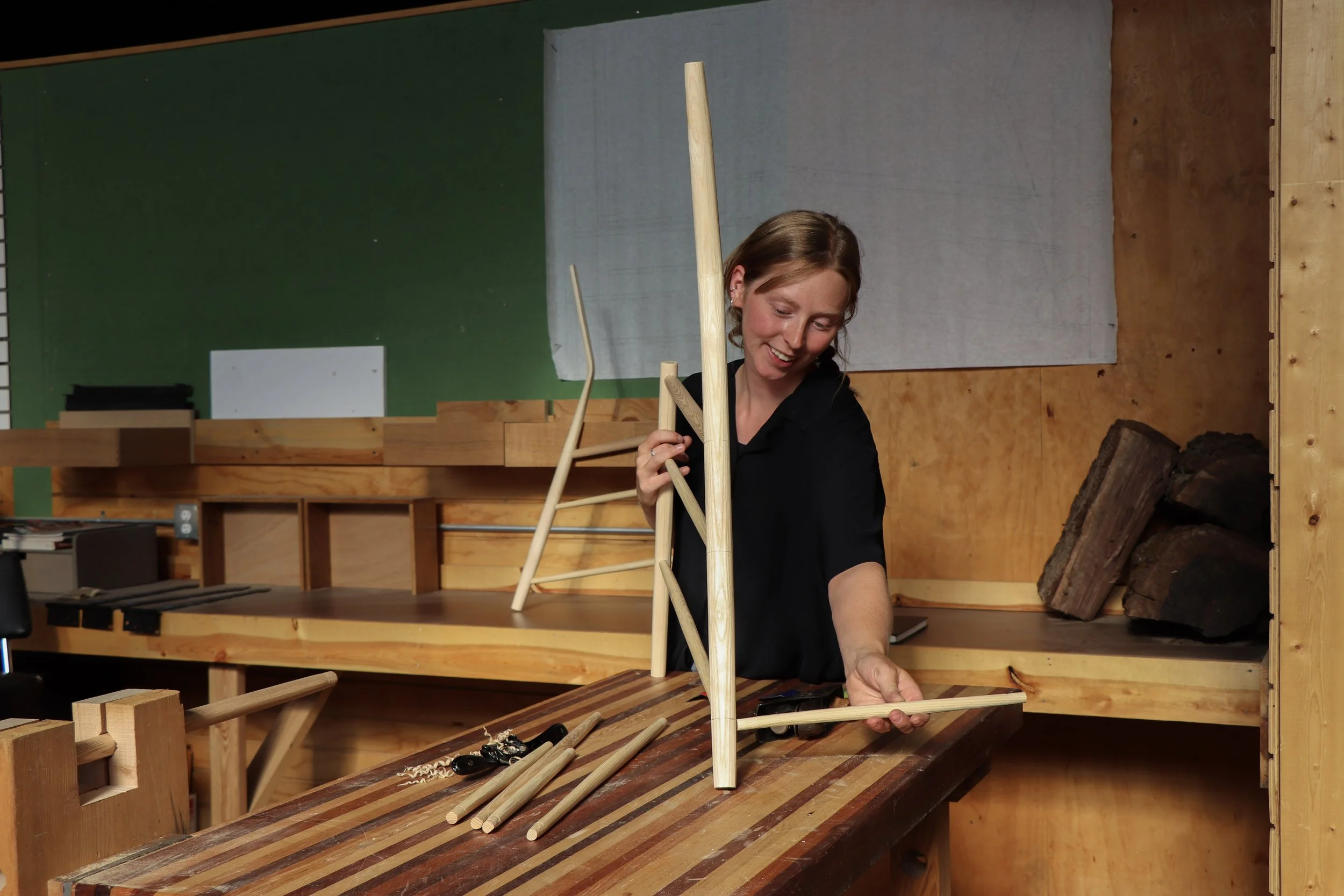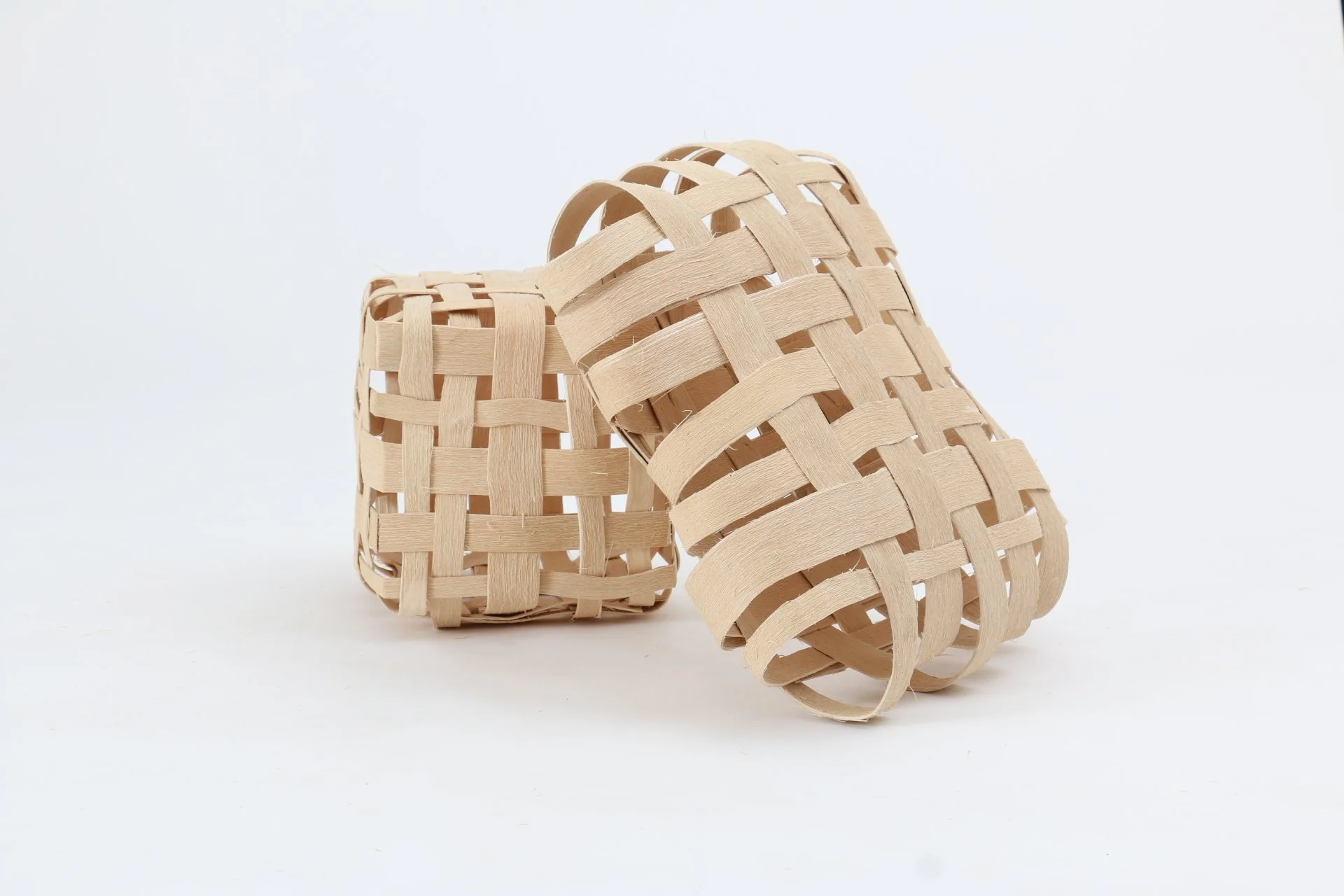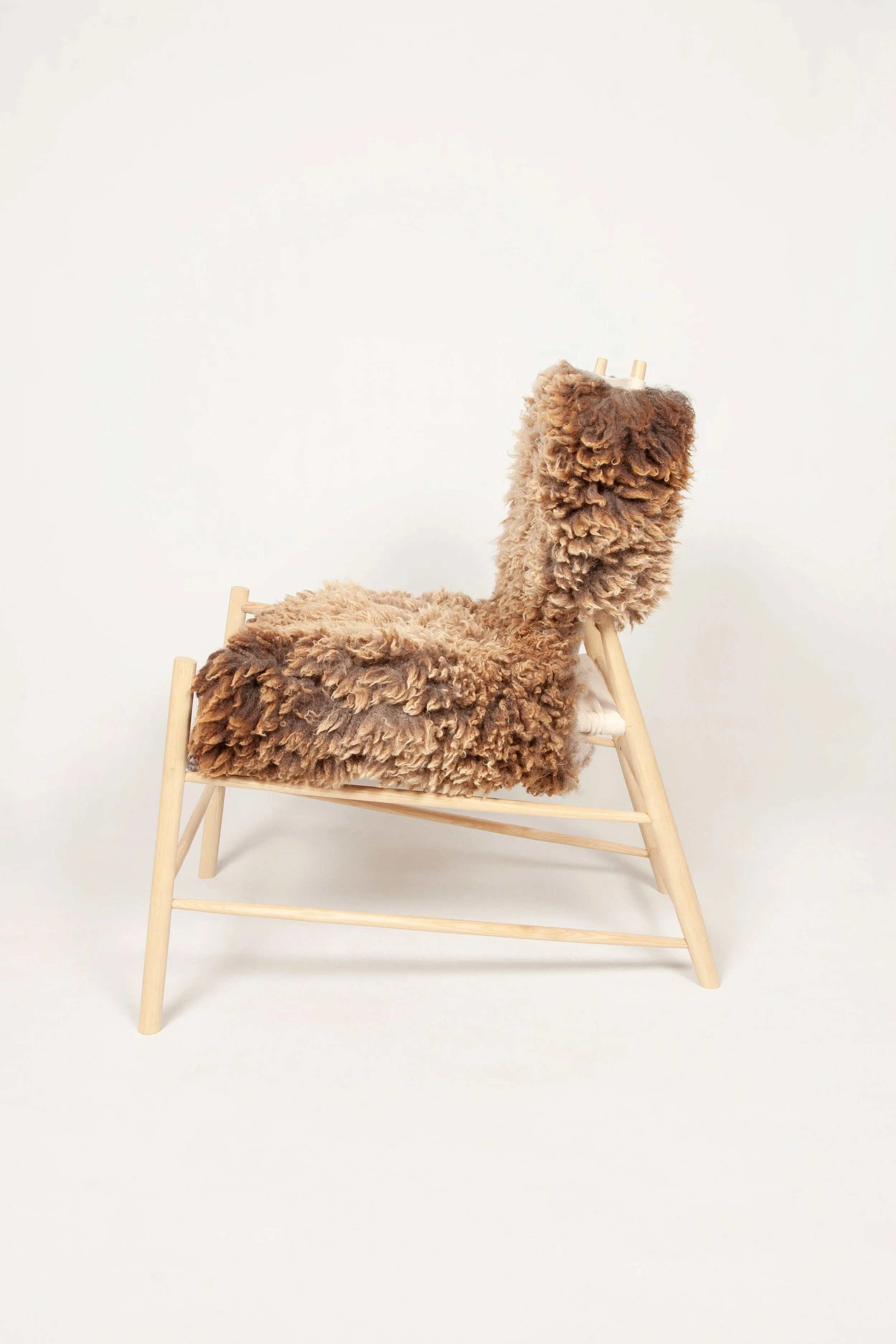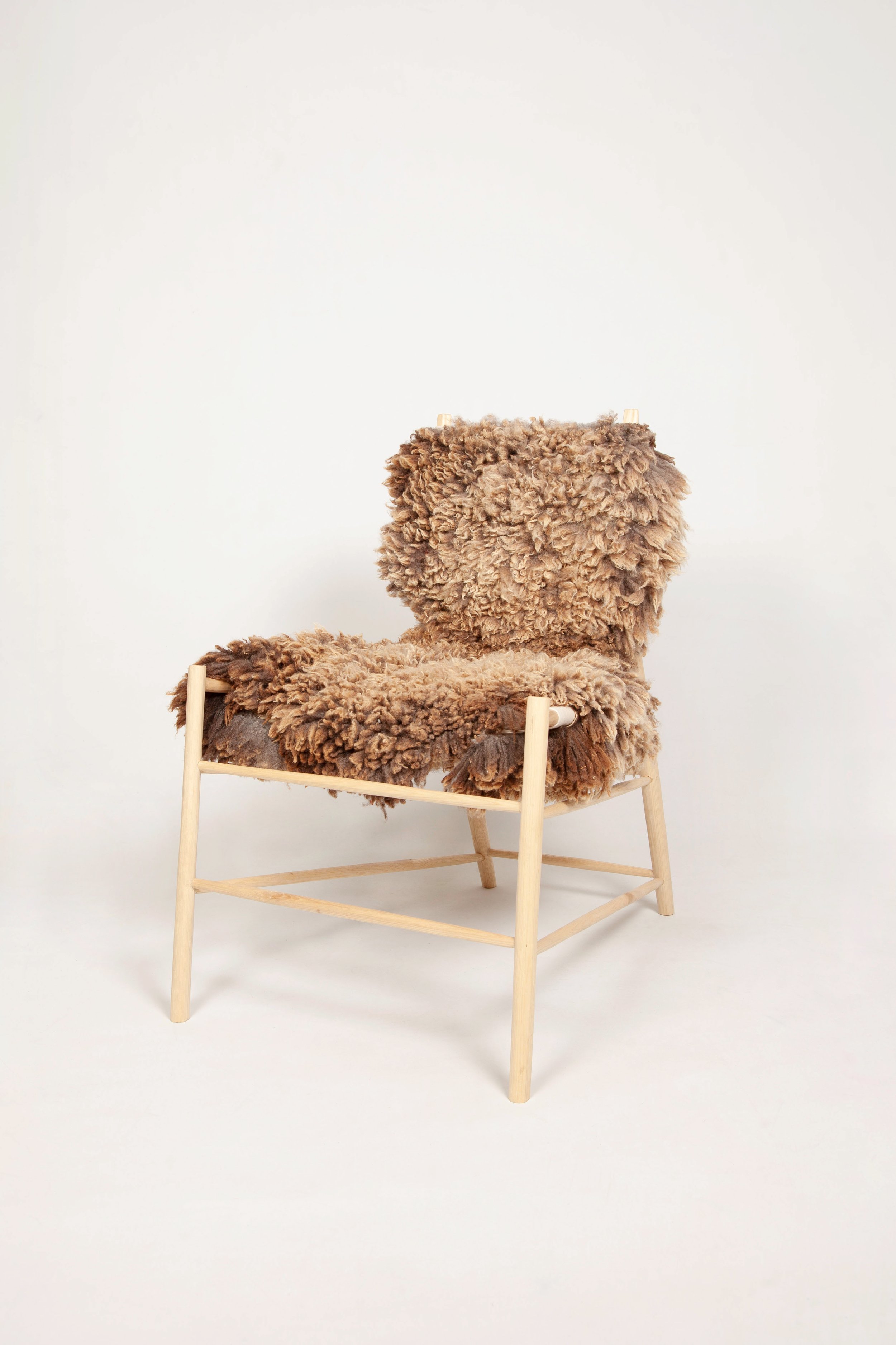Post & Rung
Category Two
The title references post and rung chairs of the Early American and Appalachian tradition. Each wood component was split out of an ash log and shaped with an axe, draw knife and spoke shave. When the moisture content of the legs is higher than the rungs, the wood will shrink and tighten the joint, as illustrated in Jenny Alexander’s Chair from a Tree.
Danish Institute of Study Abroad
I designed and built Skin and Bones during a summer Furniture and Design Program at the Danish Institute for Study Abroad, 2019. While immersed in the history of functional theory in Scandinavian Design, I created a simple chair structure with the proportions to fit my body and those smaller. The joinery of the chair was designed to replicate joints and bends of the human body, while the leather was intentionally chosen to highlight the veins apparent in the hide. It is named Skin and Bones to highlight the cultural use of leather, to ask questions by personifying the object.


Skin and Bones
Leather, Maple
27x28x29”
2019



The One-Armed Windsor was made with green White Oak, from a tree cut down in Baraboo, WI. While relying on hand tools and a shaving horse, I shaped the spindles, legs and crest. I practiced Windsor and Stick Chair methods to build and design this chair. Only one arm rest is required, I find we tend to occupy the other with drinking, eating, writing or reading.
One-Armed Windsor
White Oak
18”x18”x32”
